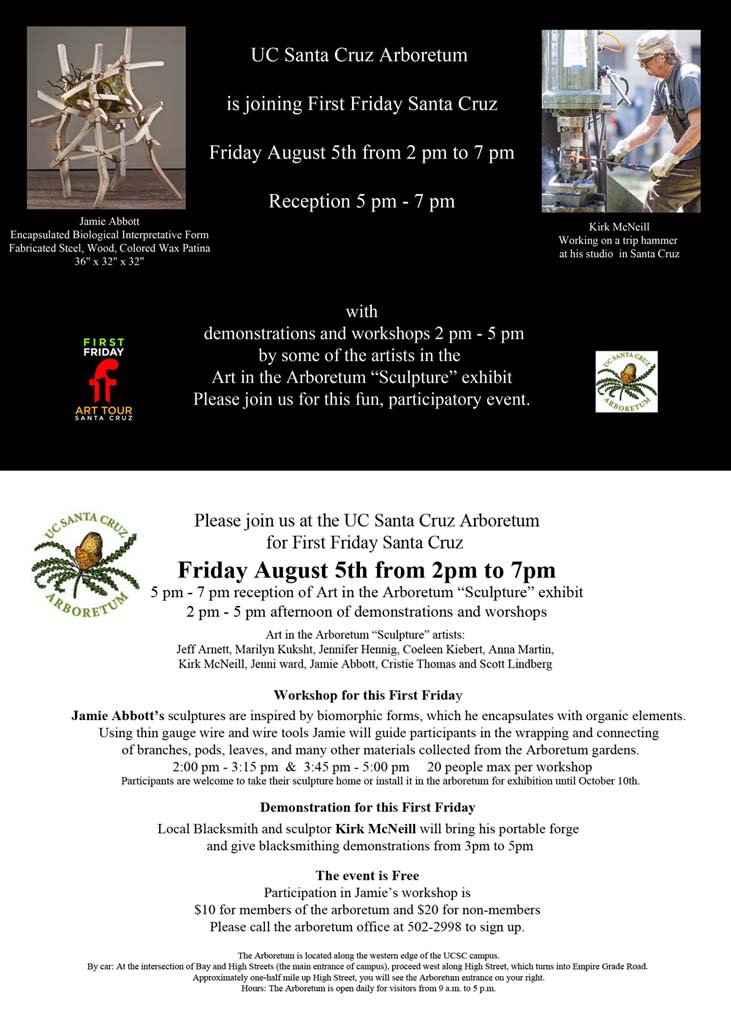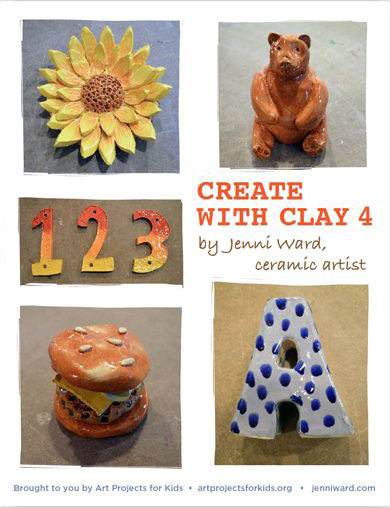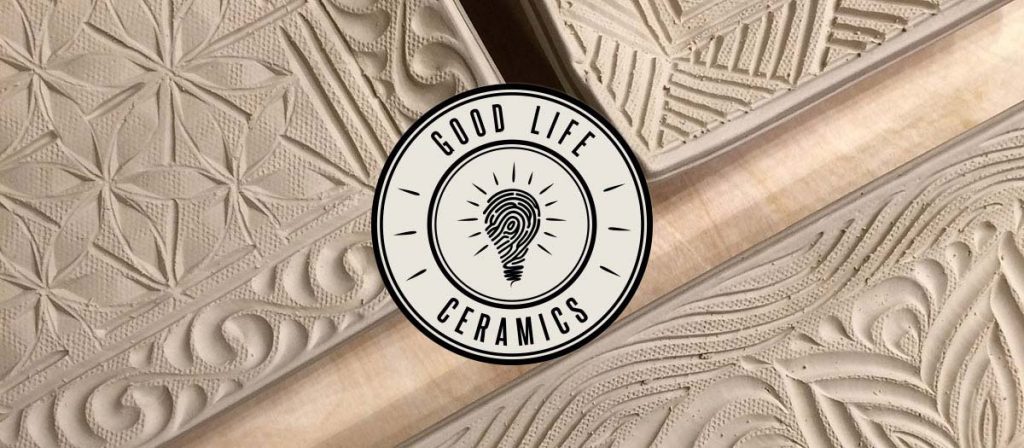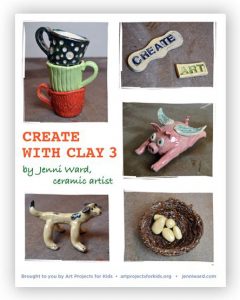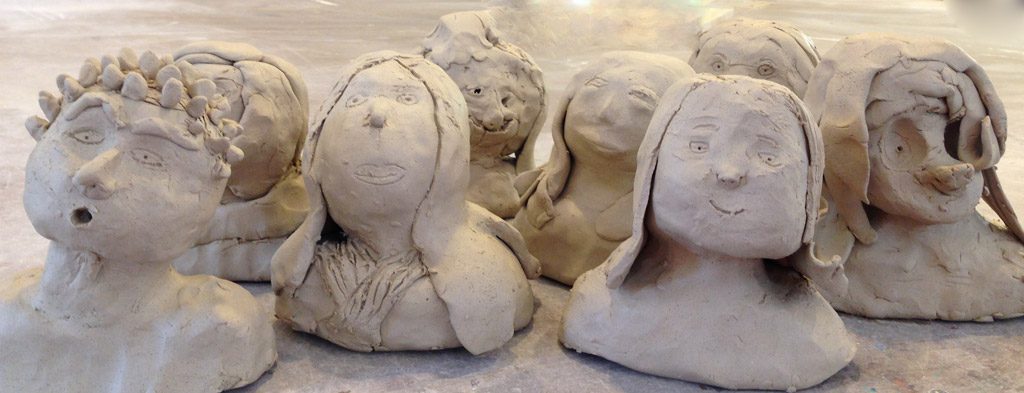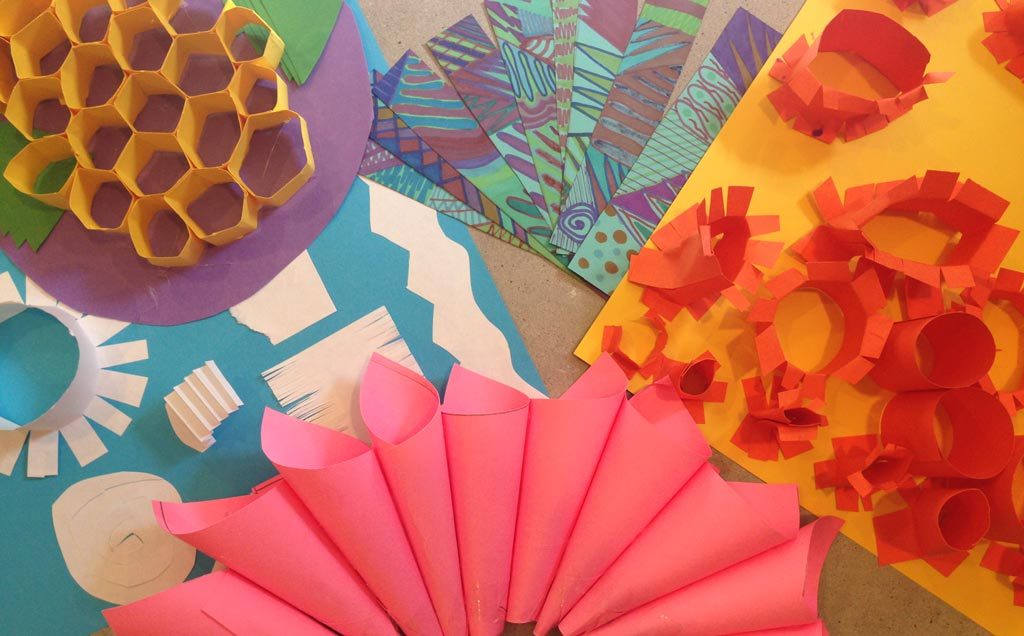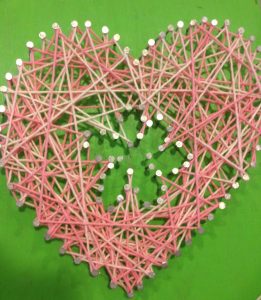Tag: Classes & Workshops
Create with Clay Project Book 4 is out!
Teachers, start planning your fall clay projects now with these five fun classroom tested projects you can do with your kiddos! In collaboration with art teacher extraordinaire Kathy Barbro, my Create with Clay PDF Book 4 is now available for $5 in the Art Projects for Kids online shop.
PDF FILE INCLUDES INSTRUCTIONS FOR:
• Sunflower
• Bear
• House Numbers
• Burgers
• 3D Letters
Summer Workshops: Clay Containers
The talented students in my Summer Sculpting Workshops used this great lesson from Ceramic Arts Daily to create handbuilt hexagonal lidded containers. We used a paper template to cut out the main shapes and then attached the walls together and built the lid in the same way. They cut a half circle key to keep the lids from sliding off and then embellished the pieces with decorative cut outs and knobs. The challenge was to keep the walls straight and corners angled just right, I think they did a fantastic job with this project! Thanks to Ceramic Arts Daily and Don Hall for sharing this idea!
Clay in the Classroom: Staying Organized
When I was teaching at elementary schools, I was rarely given a classroom to work out of, which meant that I had to haul clay, tools, projects and examples classroom to classroom. Over the 10 years that I taught ‘art-on-a-cart’ style, I developed an organized system to make it work without making a million trips back and forth. Here are a few ways I was able to stay organized and mobile…

Cart:
Rather than use a cart, I preferred to use a hand truck to move all of my clay class supplies around campus. I also like to find old wooden wine crates to carry my supplies in and I attach drawer handles onto the short sides for easy lifting and carrying. I could put 25-30 plastic cutting boards (which are each students work area), a hard plastic tub with a lid filled with clay tools and examples of the project we’re working on for the day all into the wine crate. That box goes onto the hand truck first, then I would pile a 25lb bag of clay on top for each class I had that day and I’d carry cardboard boxes that I’d put all of the students projects in. For me, this became the easiest way for me to haul all that heavy stuff classroom to classroom. If I was teaching back to back classes, I would leave the box of finished projects in the classroom so I could move onto the next class. At the end of the day, I’d return to collect the work and move it to the kiln room to dry and fire. In the kiln room, these cardboard boxes could be stacked since they are designed to fit and lock together, which made it space efficient and easy to keep each classroom’s projects together.
Project Boxes:
Costco is a great place to collect boxes that are strong enough to carry clay projects and are stackable for easy storing. I like to find the cardboard boxes that were designed to carry something heavy like melons and it’s even better if they are waxed on the surface since the boxes will last longer holding wet clay.
Typically I could fit 25 – 30 small projects from each class in one box and the box would be labeled with the classroom number and/or the teacher’s name on it for easy sorting. When the pieces came out of the kiln, they could be sorted right back into the correct labeled box. This system made it a bit easier to sort 300+ projects back to the correct student.
Labeling Art:
Keeping track of every student’s piece of art is a tricky task especially when things are going from the classroom to the kiln and back again and when you have some pretty cryptic handwriting in clay. If the kids are old enough and able, I would have them write their names on the bottom of their project and also their classroom number. If the kids were younger, I would have the kids bring me their finished project and I would write their name and room number on it for them and then place it in the cardboard box. I admit that over 10+ years, a few projects seemed to of disappeared into the abyss like a sock in the dryer but with this labeling and boxing system, the majority of projects found their way back and forth to the kiln and back to the correct creator.
Anyone else have other tips for a mobile clay classroom?
Summer Workshops are SOLD OUT but…
There are officially no spots left available in our summer sculpting workshops at Earth Art Studio! But, if you or your kids still need to get your hands messy in some clay this summer, Good Life Ceramics in Santa Cruz has everything you need. They also offer sibling discounts, so sign up today to get some creative studio time in this summer!
Also, be sure to check out their gallery space, I have pieces from my Nest Series on display there alongside a number of other beautiful functional and sculptural clay pieces by local ceramic artists!
About Good Life Ceramics:
Good Life Ceramics is a welcoming make-your-own ceramic art studio. Our doors are open to all from seasoned ceramic artists to first-timers. With guided projects for walk-ins, a fully equipped studio for members and the option to reserve the studio for private parties and corporate offsites, individuals are able to experience the beauty of clay.
Contact:
3717 Portola Drive
Santa Cruz, CA 95062
831.515.7560 | GLConPortola@gmail.com
Book 3 of Create with Clay Projects for Kids Available!
The talented Kathy Barbro of Art Projects for Kids and I have launched Book 3 of Create with Clay. This series of books is designed for you to incorporate clay into your classroom with tested projects and creative ideas. Included are 5 step by step projects with photos, descriptions and helpful hints.
Summer Workshops at Earth Art Studio
We have launched into our 11th summer of sculpting workshops at Earth Art Studio. There are just a few spots left in next week’s workshop if you’d like to join in on the fun and B CR8IV! Here are a few things we’ve been working on…
Clay in the Classroom: Keeping it Clean
When you talk about bringing clay into a teacher’s classroom, you can see the cringe creep across their faces as they imagine the amount of clean up involved in making these clay projects. But after over 10 years of teaching clay in other teachers classrooms, I’m here to tell you that it’s possible to do clay projects and not make a huge mess.
First, each student gets a board to work on at their spot. This board helps keep them, their desk and their project contained. In the beginning, I had canvas covered wood boards that were stacked into a wooden wine crate, but it was heavy to cart around and the crate only fit 20 boards. So I switched to using plastic cutting boards from Ikea. They worked great; they were affordable, durable, lightweight to carry classroom to classroom and easy to clean.
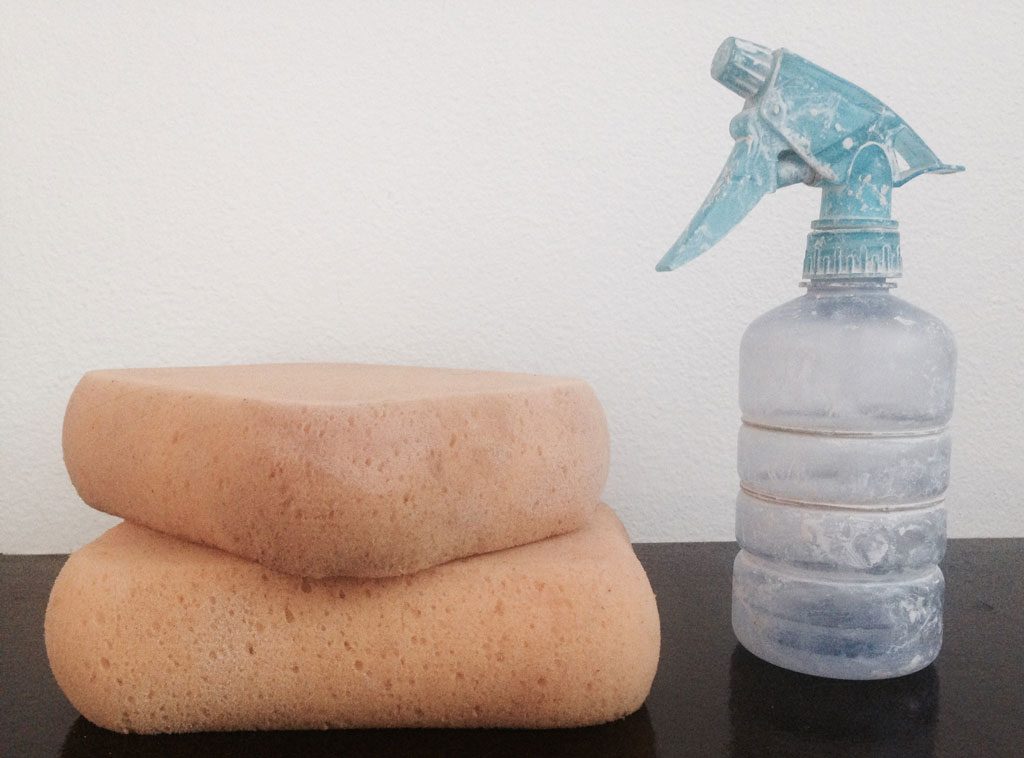
The other key to keeping the classroom clean is to not use slip (clay and water mixed together into a muddy slurry) when attaching clay parts together. Generally, slip is used as a ‘clay glue’ and the proper attaching technique is to score both parts of the clay you want to attach, then paint on a little slip and smooth the parts together. Slip and kids are a messy combination and I found that just scoring the clay and blending, really did the job, which allowed me to eliminate using slip in the classroom altogether. To remind the students that they still needed to score their clay thoroughly, I dubbed the technique: ‘scratch-to-attach’ as an easy way to remember this crucial building step. If student’s clay becomes a little dry through the building process, I bring a spray bottle of water that I can give each project a little spray as needed, keeping the water mess to a minimum.
Once all the projects are finished and it’s time to put away all the clay tools, I ask students to make a ball from all of their remaining clay bits and return that to the clay bag. I ask them to brush any remaining dust or crumbs of clay into their hand and dump that in the garbage or into the clay recycling bin if you have one and then return their cutting boards to the designated box. Once that’s done, they can use a big sponge to wipe down their desks and double check for any clay that may have fallen on the floor. At that point, your classroom should be clay free and students can get back to books.
Clay in the Classroom: Recycling Clay
If your clay gets to dried out from over working it or it gets too wet and mushy to build with, you don’t need to throw it in the bin, it can all be recycled so that every bit of clay you buy can be used. Here’s how I do it in my classroom…
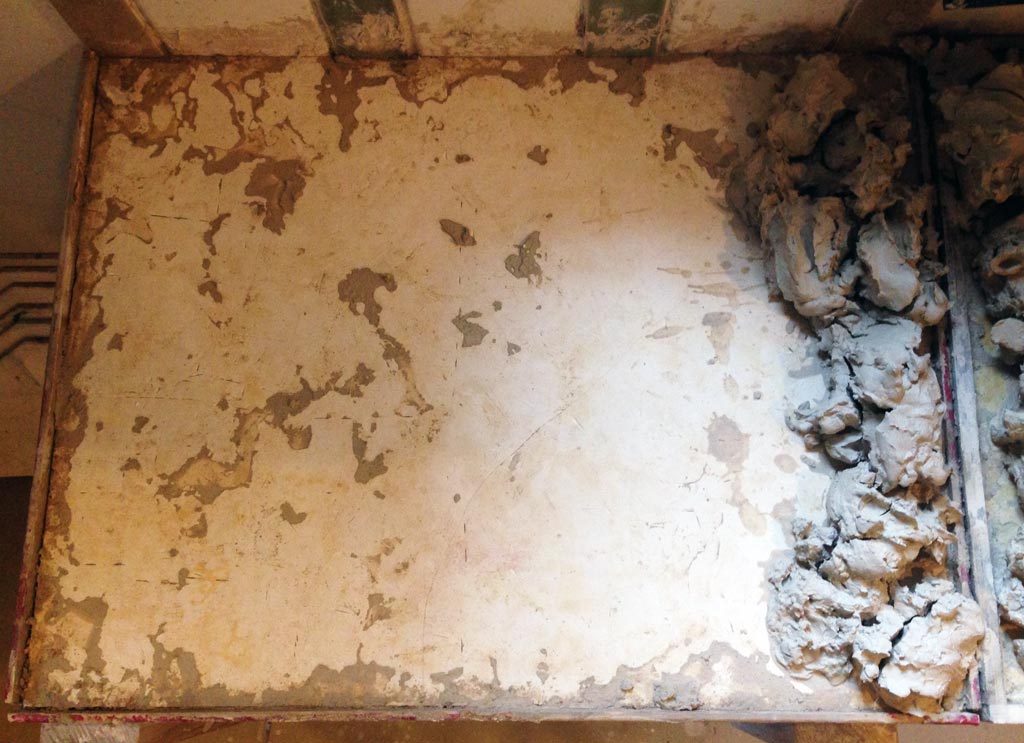
First, you’ll need a plaster board. If you’re recycling small amounts of clay, you could use some scrap drywall pieces with the paper removed from one side of it, if you’re recycling larger amounts, you’re going to want to make a thick plaster board. I have a board that is about 3’x 2′ with wood edging around the outside of it that is about 3″ high. You could use an old shallow drawer if you’ve got one.
Next, mix up your plaster per the directions on the bag and pour it into your frame, make sure the top is as even as possible and tap the sides of it to release any air bubbles that may have gotten trapped in the plaster. Let the plaster set up and harden, give it a few days to dry out before recycling any clay on it.
To set up your recycling system, you’ll need a bucket with a lid. I use a standard size garbage can on wheels to make it easy to move around the room and also tuck away but if you are recycling smaller amounts of clay a 5 gallon bucket might be big enough for you. Add all of your scraps of clay that are too wet or dry to work with and cover with water. Be careful not to allow tools, sponges or other studio debris to end up in the bucket, it will start to decompose and smell pretty bad. Allow these pieces to soak and break down until the clay is uniformly squishy.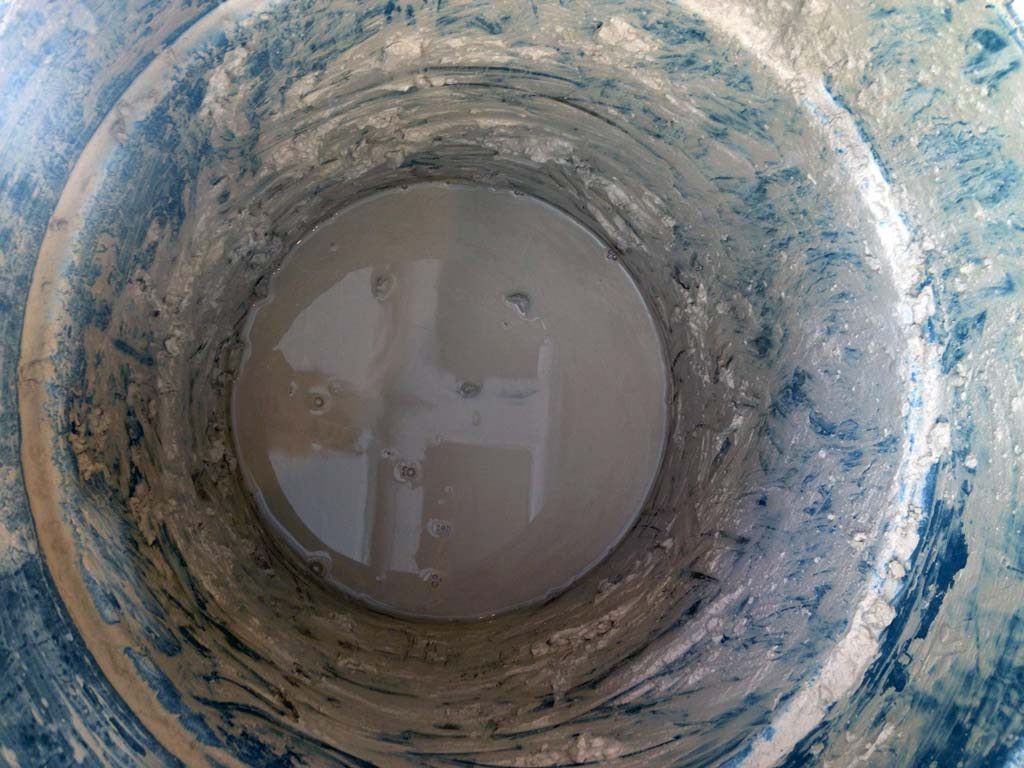
Then scoop out the clay and lay it in an even thickness onto your prepared plaster board. The plaster will dry the clay from the bottom and the air will dry it from the top, this might take a few days depending on the weather in your area, how hot the room is, how wet the clay is and how wet the plaster board is. You also might need to flip the whole thing over to keep the drying even. You’ll have to keep checking on it to make sure it’s not getting to dry. Once the clay is at a nice working consistancy, it’s ready to be wedged and bagged up for using again. Wedging the clay is sort of like kneading bread, it will remove the air bubbles from your clay so that your work doesn’t explode in the kiln. Here is a great video about wedging your clay: Clay Wedging 101. Also, if you happen to pick up small bits of plaster in your clay, be sure to pick these out before wedging your clay, as they will explode in the kiln. Then bag up your clay in thick plastic bags and store it until your are ready to build again. 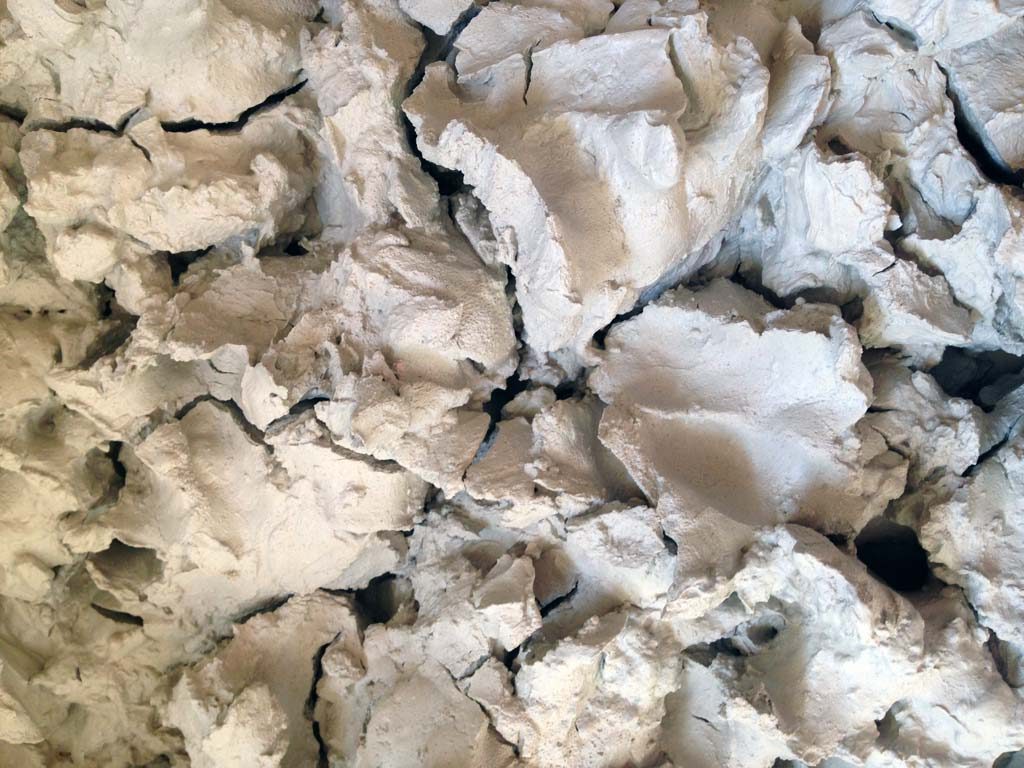
If you find your clay dried out too much on your plaster board, you can toss it back into your recycling bucket and start the process over again. Recycling clay can be a slightly laborious process but it’s definitely worth it and is a great opportunity to teach your students each step of the process and let them learn some extra credit points for helping you recycle the clay in your classroom.
Last few spots available in Summer Workshops
There are only 18 spots left in our summer workshops at the studio!
Here’s the schedule and number of spots left:
Session 1: June 6 – 10 (Ages 7+) FIVE SPOTS LEFT
Session 2: June 13 – 17 (Ages 7+) TWO SPOTS LEFT
Session 3: June 20 – 24 (Ages 9+) SIX SPOTS LEFT
Session 4: June 27 – July 1 (Ages 11+) FULL
Session 5: July 5 – 8 (Ages 7+) FULL
Session 6: July 11 – 15 (Ages 7+) FOUR SPOTS LEFT
Session 7: July 18 – 22 (Ages 9+) ONE SPOT LEFT
Session 8: July 25 – 29 (Ages 11+) FULL
Learn more…
